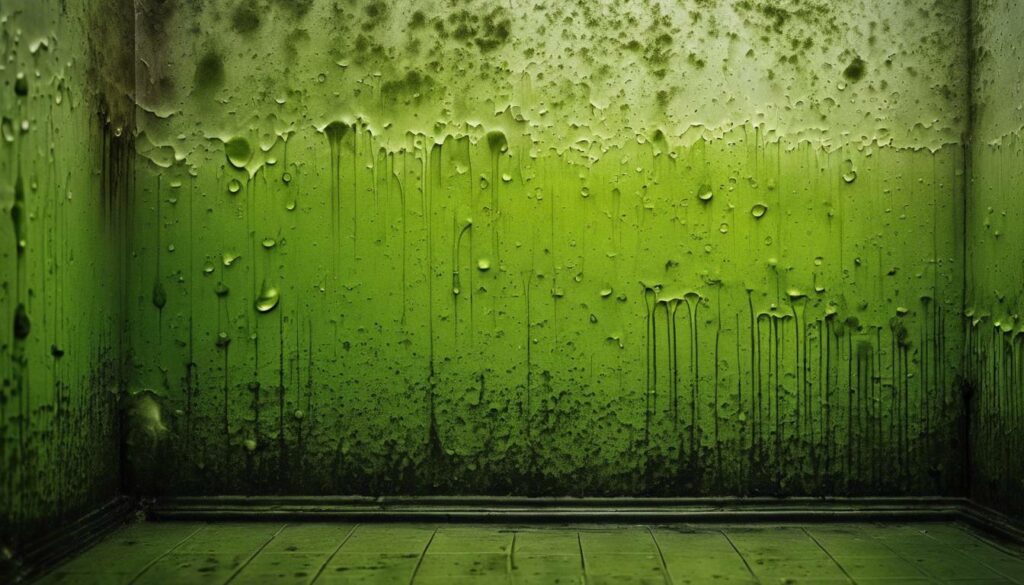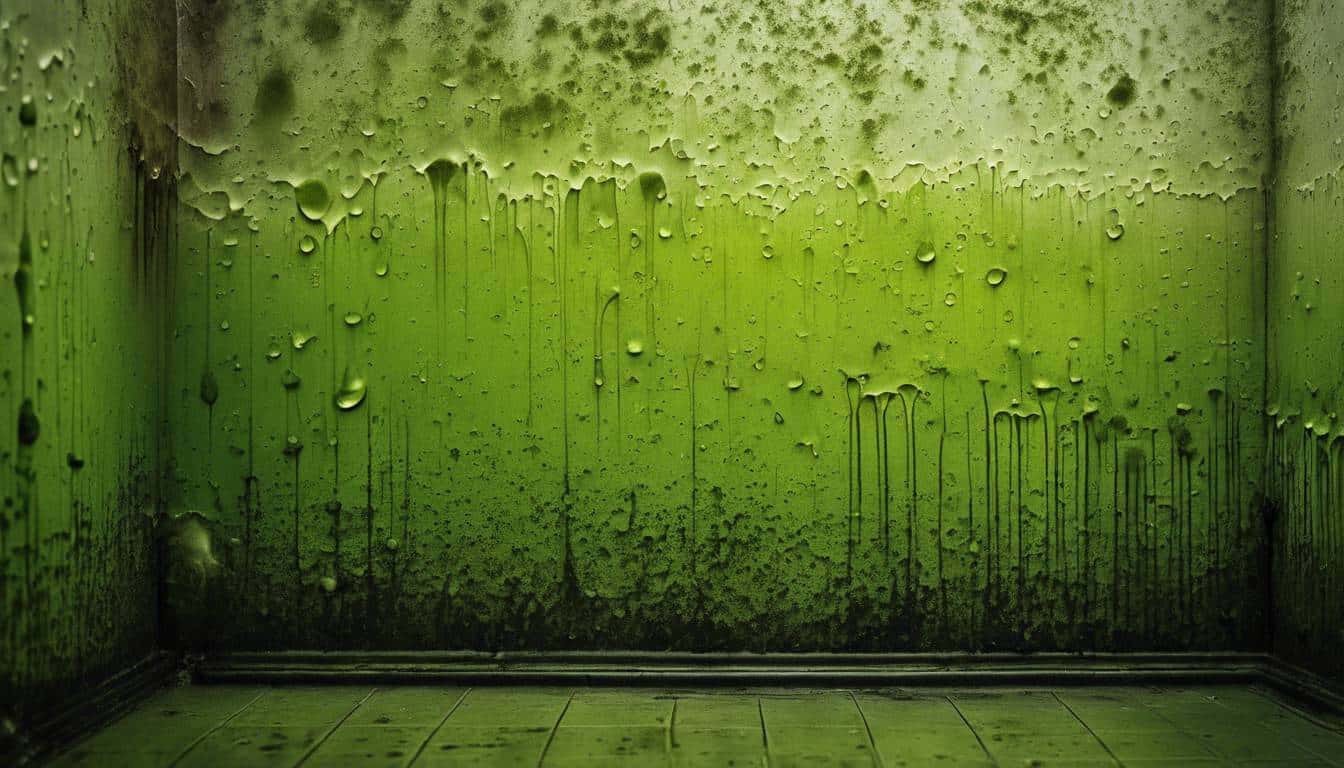I have been sick for over 10 years because of mold in my house… here’s what I wish I knew before. Exposure to mold triggers various health concerns ranging from allergies to severe respiratory issues. Mold propagates substances like allergens and mycotoxins which when inhaled for longer periods could lead to substantial harm. Symptoms such as skin irritation, coughing, throat discomfort and many more can easily be mistaken for common ailments. Surprisingly, these might be a direct result of mold exposure. Armed with this knowledge of potential symptoms and effects, we can now delve into a crucial aspect – prevention.
Mold exposure can cause various health issues, including respiratory problems, allergy symptoms, and in some cases, potentially severe reactions. The effects can vary depending on the individual and the duration of exposure. If you suspect mold in your environment, it’s essential to stop mold growth promptly to mitigate potential health risks.
Health Risks of Mold Exposure
Mold isn’t just a nuisance—it can pose serious health risks if left unchecked. When mold reproduces, it releases tiny spores into the air that can be inhaled, leading to a range of health issues for individuals who are sensitive to it. The most common health problems caused by mold are related to allergies and respiratory issues, as it produces allergens and irritants triggering allergic reactions—sneezing, runny nose, red eyes, and throat and lung irritation.
For some people, these symptoms can be immediate upon exposure to mold or they may experience delayed reactions. Individuals with asthma need to pay particularly close attention to mold exposure, as it can trigger asthma attacks, worsen existing respiratory conditions, and lead to chronic lung issues in the long run.
The Mycotoxin Menace
It doesn’t stop there—certain types of mold produce mycotoxins, toxic compounds with severe health effects when ingested or inhaled over a prolonged period. Known for their adverse impact on the immune system, mycotoxins can contribute to long-term health effects like autoimmune diseases and cancer.
The symptoms of these long-term effects can vary widely among individuals due to different mixes of mycotoxins in each environment and individual differences. Some common symptoms include frequent urination, brain fog, chronic fatigue, irritability, temperature dysregulation, light sensitivity, skin rashes, weight gain, and many more. It’s essential to understand that these symptoms may not manifest immediately but could gradually become more pronounced with persistent mold exposure over time.
In scientific studies, there has been a strong correlation between mold exposure and an increased risk of respiratory infections in individuals with compromised immune systems. This highlights the critical importance of addressing mold issues promptly, especially for those vulnerable to infections due to compromised immunity.
Understanding the comprehensive range of health risks associated with dangerous mold exposure is crucial in proactively safeguarding our well-being. By familiarizing ourselves with the potential dangers posed by molds and mycotoxins, we empower ourselves to take necessary preventive measures and minimize health-related complications.
Symptoms and Effects of Mold Exposure
Breathing in mold can lead to a range of irritating symptoms, making life uncomfortable for you. If you find yourself frequently dealing with nasal stuffiness, throat irritation, coughing, wheezing, skin irritation, or eye irritation, those might all be signs that you’ve been exposed to mold.
Nasal Stuffiness: When you’re having trouble breathing through your nose or it feels blocked, you might have mold in your home. It can cause your body to produce more mucus which blocks your nose and makes you feel stuffy.
Throat Irritation and Coughing: Mold can make your throat feel scratchy and sore, making you cough more often as well.
Wheezing: Similar to asthma, wheezing is a whistling sound when you breathe that can be brought on by mold exposure.
Skin and Eye Irritation: Irritated skin becomes dry, red, and itchy. Meanwhile, eye irritation leads to redness, watery eyes, and itchiness too.
More Severe Reactions
Sometimes, individuals with mold allergies or underlying respiratory conditions like asthma may experience even more severe reactions. These can include difficulty breathing and chest tightness. So if you already deal with respiratory issues, exposure to mold can aggravate these conditions even further. It’s crucial to realize how much worse mold exposure might make things for you, especially if these conditions are not properly managed.
Long-term Impact
Apart from just immediate symptoms, the consequences of long-term exposure to mold shouldn’t be overlooked either. Chronic respiratory infections become far more frequent among those exposed to mold regularly. Even healthy people who have stayed around large amounts of mold for extended periods are at risk of developing respiratory infections.
In addition to this, individuals with asthma need to be particularly cautious about mold exposure. The risk of having severe asthma episodes is amplified when exposed to mold, hence it’s crucial for them to avoid contact with any possible sources of mold as much as possible.
It’s similar to fighting off an army – just as you think one battle is won, another begins. By being vigilant against prolonged exposure to mold and keeping your environment clean and dry, you’re boosting your defenses against avoidable health issues.
Recognizing these symptoms and effects provides insight into the serious impact that mold exposure can have on our health.
Immune Systems and Mold Exposure
Our immune system is akin to a guardian that protects our body from dangers. It’s a sophisticated network of cells, tissues, and organs that work together to defend the body against harmful invaders, such as bacteria, viruses, and even mold. When the immune system functions normally, it can recognize and combat these threats effectively. However, mold spores can trigger responses in the immune system that can have both immediate and long-term effects.
Mold releases tiny particles called mycotoxins into the air. These mycotoxins are known to cause inflammation in the body, which can be particularly taxing on the immune system. When this occurs over an extended period, it can eventually weaken the immune system, making it less effective at fighting off other potential threats. Essentially, the immune system becomes overwhelmed and tired as it tries to keep up with combating the effects of mold exposure.
Precautions for Vulnerable Individuals
People with compromised immune systems, such as individuals undergoing chemotherapy or those with HIV/AIDS, are especially susceptible to the health risks of mold exposure. For these individuals, even brief exposure to mold can lead to severe symptoms and complications. This makes it crucial for them to take extra precautions such as using HEPA air filters and keeping indoor humidity levels low to prevent mold growth.
For example, individuals going through cancer treatment already have weakened immune systems due to chemotherapy. Exposure to mold in their environment could further compromise their immune response, making them more susceptible to additional infections or illnesses.
The elderly are also more vulnerable to the health impacts of mold due to age-related changes in their immune systems. Their bodies may not respond as well to infections, making it important for them to avoid exposure to mold whenever possible.
Understanding how mold exposure affects our immune system helps us appreciate the importance of taking preventive measures. By recognizing the specific vulnerabilities of certain individuals and implementing targeted precautions, we can significantly reduce the health risks associated with mold exposure.
Now that we comprehend how mold exposure poses a particular threat to vulnerable groups, let’s explore in more detail how it can specifically affect our respiratory health.
Respiratory Problems due to Mold Exposure
When we think about mold exposure, the first thing that comes to mind is usually the potential damage to our respiratory system. For individuals with asthma or other respiratory conditions, mold exposure can be especially problematic since mold spores, which are tiny reproductive particles released by mold, can trigger acute asthma attacks and exacerbate existing respiratory issues.
Let’s take a closer look at the specific respiratory problems associated with mold exposure:
- Asthma Attacks: For those with asthma, exposure to mold spores can act as an asthma trigger, leading to symptoms such as chest tightness, wheezing, shortness of breath, and coughing. The presence of mold in indoor environments may significantly worsen the severity and frequency of asthma attacks, making it crucial to address any mold issues promptly.
- Persistent Coughing: Mold spores in the air can lead to irritation of the respiratory passages, causing persistent coughing. This can be particularly distressing for individuals who are continuously exposed to mold-contaminated environments.
- Chest Tightness and Respiratory Discomfort: Mold-related respiratory issues often manifest as a feeling of tightness in the chest and general discomfort when breathing. These symptoms can be alarming for those affected, impacting their overall quality of life.
It’s worth noting that these problems aren’t limited to individuals with preexisting respiratory conditions. Even healthy individuals can experience respiratory discomfort and irritation when exposed to high levels of mold spores in the air.
Consider a household where black mold has developed in a damp basement. The occupants may start experiencing coughing fits and chest tightness due to prolonged exposure to the airborne mold spores. This situation underscores the critical need for addressing and mitigating mold growth in indoor spaces.
It’s evident that the impact of mold on respiratory health is significant, particularly for vulnerable individuals with pre-existing conditions. In the next section, we’ll uncover actionable strategies for preventing and addressing mold-related respiratory issues.
How to Reduce the Risk of Mold Exposure
Mold can thrive in any damp environment; therefore, controlling indoor humidity is crucial to thwart its growth. Maintaining an indoor humidity level of 60% or lower significantly reduces the risk of mold flourishing, making the use of dehumidifiers essential in moisture-prone areas.
Additionally, ensuring proper ventilation in spaces like bathrooms and kitchens is pivotal for preventing moisture buildup. The use of exhaust fans in these areas plays a key role in reducing excessive humidity, thereby discouraging mold growth.
Prompt action when water leaks occur is crucial in minimizing the risk of mold development. Whether it’s a leaky pipe, roof leak, or window intrusion, addressing these issues promptly can make a world of difference in preventing mold from taking hold in your home. A vigilant eye and swift response to water leaks are invaluable in mitigating the risk of mold growth.
For instance, a small unnoticed leak behind a wall can give rise to hidden pockets of dampness, providing an ideal breeding ground for mold. That’s why it’s essential to regularly inspect all areas susceptible to water damage and resolve any issues as soon as they’re detected.
Regular maintenance and inspection are fundamental aspects of preventing mold growth. Areas such as basements, bathrooms, and attics are particularly prone to moisture accumulation, making them hotspots for potential mold growth. Regularly checking these areas allows homeowners to identify and address any potential issues before they escalate into significant problems.
In conclusion, controlling indoor humidity, promptly addressing water leaks, and maintaining vigilant oversight over susceptible areas are key components in reducing the risk of mold exposure at home. By implementing these measures, individuals can create a healthier living environment for themselves and their families, safeguarding against the potential health hazards posed by mold.
As we’ve seen, proactive measures play a vital role in minimizing the risk of mold exposure. Now, let’s turn our attention to practical steps for getting rid of mold and maintaining indoor spaces free from it exposure. Now, let’s turn our attention to practical steps for maintaining indoor spaces free from mold.
Keeping Indoor Spaces Mold-Free
As we already know, mold thrives in damp, dark, and warm environments, making bathrooms, kitchens, and basements particularly susceptible to mold growth. To tackle this issue effectively and keep indoor spaces mold-free, it is crucial to maintain proper ventilation. Good airflow helps reduce moisture buildup, preventing the conditions necessary for mold spores to flourish.
This means installing and using exhaust fans in the kitchen and bathroom while cooking or bathing to remove excess humidity. Additionally, opening windows on dry, breezy days can help promote air circulation and prevent stagnant air from creating pockets of moisture in certain areas of the home.
In addition to adequate ventilation, using mold-resistant products can be a game-changer in protecting indoor spaces from mold colonization. When renovating or remodeling areas prone to mold growth such as bathrooms and basements, choosing materials like mold-resistant drywall, paint, and insulation can significantly decrease the likelihood of mold formation. For instance, selecting mold-resistant paint for interior walls not only enhances the aesthetic appeal of the space but also adds an extra layer of protection against potential mold development.
Implementing Regular Cleaning Routines
Consistent cleaning routines play a crucial role in preventing mold growth. Dusting surfaces regularly with a damp cloth or microfiber duster helps eliminate dust particles that may harbor mold spores.
Keep in mind: High humidity levels contribute to mold growth, so closely monitoring indoor humidity and maintaining it within the recommended range of 30-50% is essential. It’s important to clean unseen places like behind furniture or inside closets regularly as well.
Regular vacuuming and mopping can help remove any lingering dust or dirt that could possibly contribute to mold growth.
By incorporating proper ventilation practices, utilizing mold-resistant products, and maintaining a vigilant cleaning regimen, you can effectively safeguard your living environment against the threat of mold. These proactive measures ensure indoor air quality and create a healthy living space for you and your family.
Embracing these proactive strategies can significantly mitigate the risk of mold exposure and its associated health effects. Your dedication to maintaining a mold-free indoor environment contributes to a healthier lifestyle for you and your loved ones.






